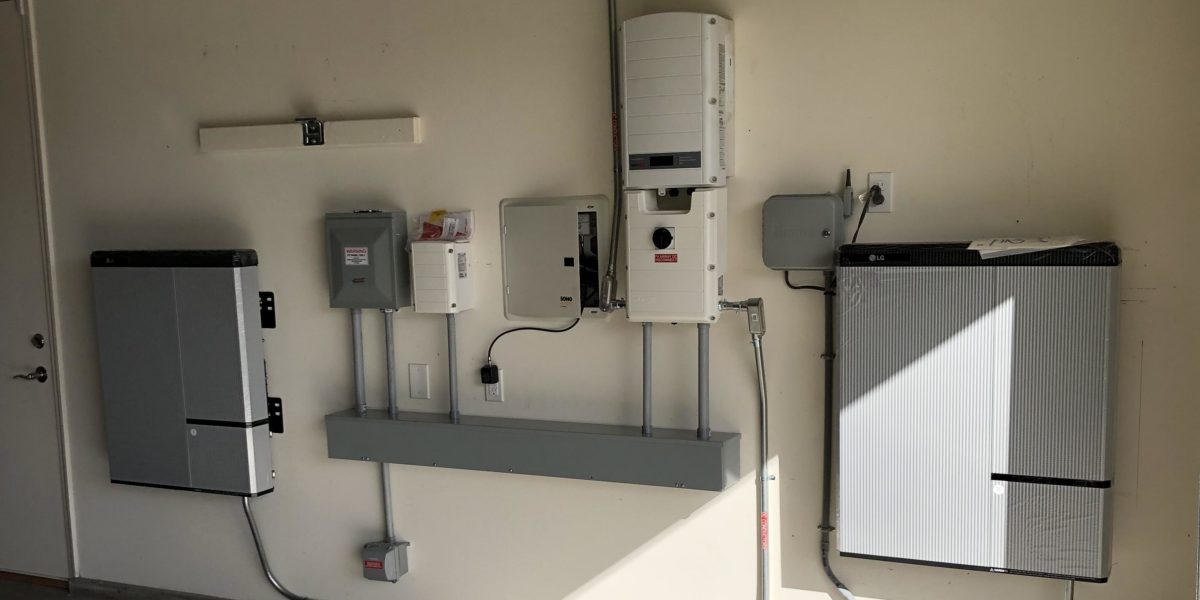We should thank Sunrun for continuing to break new ground, and for investing company resources in moving the industry forward. Now the industry has a new precedent that it will build upon; it has a piece of confidence to carry. And residential solar+storage is soon to be a fundamental building block of the Eastern Interconnection – argued to be the largest machine on the planet.
Sunrun has won a bid for 20 MW to participate in ISO New England’s 2022-2023 Forward Capacity Market (pdf). The bid means that Sunrun will be required to offer to the broader power grid 20 MW of power, 24 hours day for the single year period. The company will be paid $3.80/kW/month – totaling $76,000/mo, and $912,000 for the full year contract.
Sunrun notes that the capacity will be made possible by its Brightbox energy storage product line. Currently, this product is an LG Chem RESU. LG’s 48-volt battery comes with 3.3, 6.5 and 9.8 kilowatt-hour (kWh) ratings, and its 400-volt batteries offer 7.0 and 9.8 kWh ratings. Both AC- and DC-coupled versions are available. Sunrun noted they would need about 5,000 New England customers to meet the requirement – which would suggest somewhere between.
ISO New England noted that more than 43 GW of capacity qualified for the auction, and that just under 35 GW of this capacity (including 4 GW of energy efficiency and demand response) was chosen to meet the projected power grid requirements. Or seen in another light, the Sunrun capacity represents less than 1/10th of one percent of the overall market.
This announcement comes of the heels of two very significant recent legislative victories for solar+storage. First, California is allowing DC coupled solar+storage to participate in net metering. And second, Massachusetts just ruled that energy storage that is in the SMART program has the right to sell its own energy into these same forward capacity markets that Sunrun just bid on. Sunrun was part of the negotiations with Massachusetts to push this legislation through.
Recently, the California Solar and Energy Storage Association released a white paper detailing legislative barriers that prevent customer-sited solar and storage from maximizing its potential as a grid resource in the state. Expect the group’s suggestions to be given respectful attention by California’s regulators.
And expect that this will be the first of many residential solar+storage contracts where it is the machine that sits on your garage wall that is a fundamental contributor to the power grid.
This content is protected by copyright and may not be reused. If you want to cooperate with us and would like to reuse some of our content, please contact: editors@pv-magazine.com.









What do the 5,000 customers get for allowing their systems to participate in the market?
Probably a lower PPA price in the future as the company will make use of the extra revenue to better compete
$76,000 per month, not per year.
5000 customers not enough unless 20MW is not truly required for 24hrs/day.
fixed, ty
It looks like they are trying to use the solar PV and storage as a means of arbitrage. From the past few years it seems the utilities have witnessed that non-fueled generation is cheaper to run over the lifetime of the generation plant than a commodity fueled generation plant. If one stores most of the generated power during the day, then premium prices can be charged at night or during high demand times along the grid at a “demand charge” of $3.80/kWh. Since this energy storage is across the grid, it can also store excess generation from a “fueled” source that allows the utility to operate the plant in a more efficient mode than “spinning reserve”. The electric utilities finally understand that energy storage along the grid actually “stacks value” that pays for the system sooner than later. You can use energy storage for arbitrage, buy electricity low, sell high, grid frequency regulation, grid smoothing, load shifting or even “islanding power control”. If the feed into a switching station goes down, one could run for a time off of the stored energy at the switching stations site.